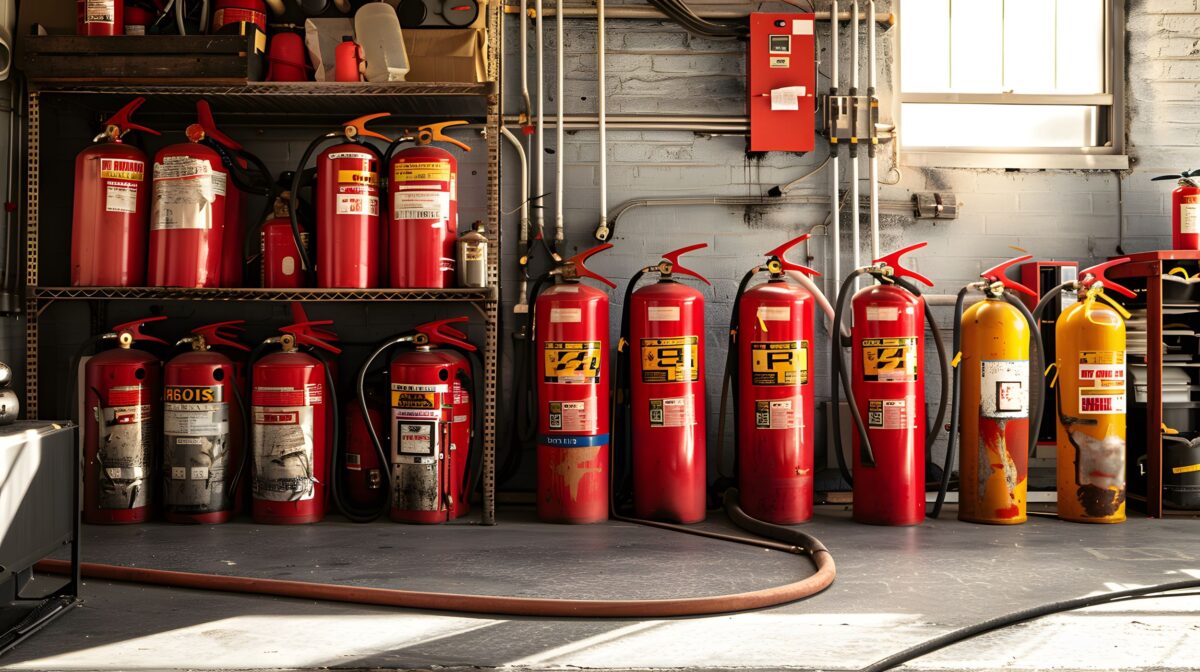Fires can be highly unpredictable, and when they occur, being unprepared is the last thing you want. Whether it’s a minor flare-up in your kitchen or a more significant incident at work, knowing how to respond effectively in fire safety can be crucial. What you may not realize is that various types of fires necessitate distinct methods for safe extinguishment. This is where fire extinguishers play a vital role, but it’s important to note that not all extinguishers are created equal. In fact, using the incorrect type could exacerbate the situation! In this blog, we will examine the different fire classes and delve into the five essential types of fire extinguishers you should be familiar with.
CLASSIFICATION OF FIRES
Fires are not all the same, which is why they are classified into specific categories. Here’s a concise overview:
Class A – Ordinary Combustibles
This class includes fires fueled by common materials such as wood, paper, cloth, rubber, and plastics.
Picture a campfire, a mishap in the fireplace, or a kitchen towel igniting. These fires are generally extinguished by cooling the burning items.
Class B – Flammable Liquids
This category encompasses fires involving flammable liquids like gasoline, oil, and alcohol. Such fires can erupt in kitchens, garages, or industrial settings and can spread rapidly. They require extinguishers designed to smother the flames by cutting off their oxygen supply.
Class C – Electrical Fires
Fires that involve electrical devices, including wiring, appliances, and outlets, fall into this class.
It’s crucial to avoid using water on electrical fires, making specialized extinguishers necessary to prevent electric shock.
Class D – Combustible Metals
While less common in residential areas, these fires occur in industrial environments and involve metals such as magnesium, titanium, and sodium. They require specialized extinguishers, as they burn at very high temperatures and can react violently with water.
Class K – Cooking Oils and Fats
Primarily found in commercial kitchens, Class K fires involve cooking oils and fats, particularly those in deep fryers.
These fires can escalate quickly, underscoring the importance of having the correct extinguisher readily available.
5 DIFFERENT TYPES OF FIRE EXTINGUISHERS
Having explored the different types of fires, let’s delve into the various fire extinguishers available and their effectiveness against these fire classes.
1. Water Fire Extinguishers (Class A)
Water fire extinguishers are the most prevalent choice, specifically designed for Class A fires that involve materials such as wood, paper, and fabric.
They function by cooling the flames and eliminating heat.
However, it’s crucial to note that they are only suitable for Class A fires; using water on flammable liquids or electrical fires can lead to severe consequences.
Use: Perfect for extinguishing fires involving paper, textiles, and wood. You’ll typically find them in schools, offices, and residential settings.
Not for: Electrical or liquid fires. Water and electricity are a dangerous combination, and applying water to flammable liquids can exacerbate the situation.
2. Foam Fire Extinguishers (Class A & B)
Foam extinguishers are capable of addressing both Class A and B fires, offering greater versatility.
The foam creates a barrier over the flames, cutting off the oxygen supply while simultaneously cooling the fire. This makes them effective against flammable liquids like oil and gasoline, as well as common combustibles such as wood and paper.
Use: Ideal for environments like garages and workshops where flammable liquids are present, while also effective for organic material fires.
Not for: Electrical fires. The foam can conduct electricity, posing a risk of electric shock.
3. Dry Powder Fire Extinguishers (Class A, B, C, & D)
Dry powder extinguishers are highly versatile, and capable of tackling Class A, B, C, and certain Class D fires, depending on the powder type.
They work by enveloping the fire in a fine powder that smothers the flames and interrupts the chemical reactions fueling the fire.
These extinguishers are commonly found in industrial environments due to their broad applicability.
Use: Excellent for electrical fires, flammable liquids, and combustible metals. You’ll often see them in factories and garages.
Not for: Enclosed spaces. The powder can obscure visibility and make breathing difficult. Not suitable for use in the kitchen.
FIRE EXTINGUISHERS IN KARACHI ONLINE
Fires can vary, so using the right extinguisher is key. If you don’t have the right fire safety equipment at home or work, it’s time to stock up with HAC and Sons. As a trusted supplier of fire safety equipment, we offer a wide range of reliable extinguishers from trusted brands, all delivered promptly. Don’t wait—get prepared today and ensure your safety with HAC and Sons!


